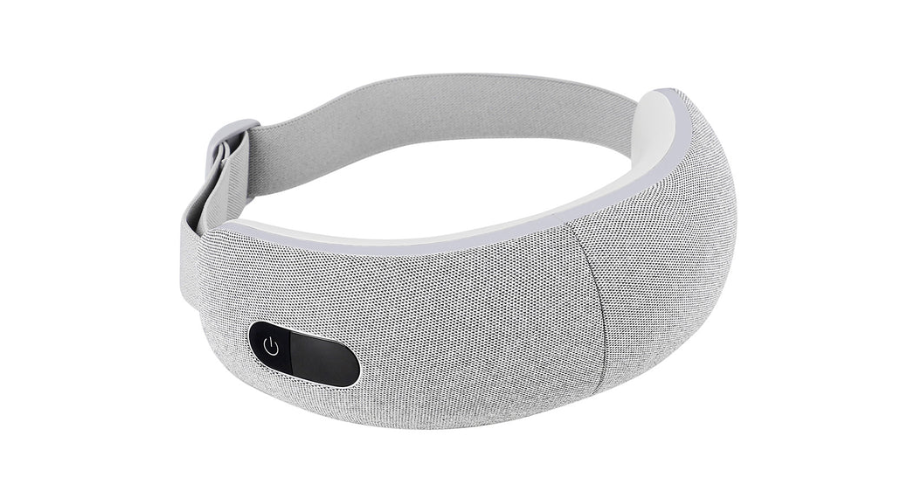
Are Eye Massagers Safe? A Practical Guide for U.S. Shoppers
“Are eye massagers safe?” is the question most people type before they ever add one to their cart. The honest answer isn’t a simple yes or no. Safety depends on the device you choose (steady heat, air-compression cushions, light vibration—sometimes with built-in audio), how you use it (temperature, pressure, session length), and your own eye history.
When you purchase from a reputable seller, keep temperatures modest, avoid direct pressure on the eyeballs, and stick to short, well-timed sessions. Eye massagers are generally considered low-risk comfort tools. If you crank the heat, cinch the strap, or ignore red-flag symptoms, the risk goes up. The goal of this guide is to show you how to use one well—so you feel better, not worried.
How They Work—and Where the Boundaries Are
Consumer eye massagers are designed to relax the area around your eyes, not the eyes themselves. Gentle, steady heat (about 100–113°F / 38–45°C) warms the eyelids and surrounding muscles, which many people find soothing after long screen days, dry indoor air, or travel.
Air cushions inflate and deflate in patterns that hug the brow, cheekbones, and temples. Good designs spread pressure around the hard bony rim so the eyeball isn’t pushed. Some units add mild vibration and ambient audio as relaxation cues. A key boundary: no aggressive pressure on the globe itself, no “hotter is better,” and no marathon sessions. Respect those lines and you’re already most of the way to safe.
What “Safe” Looks Like in Real Life
Safe use looks… kind of boring—in a good way. Heat feels comfortably warm, never too hot. Compression feels like a gentle hug, not a clamp. You might notice a slight “ahh” moment afterward; a touch of fogginess can happen right when you take the mask off, but it should clear within minutes.
You shouldn’t see deep strap marks, persistent blur, intense redness, extra dryness, or a headache that wasn’t there before. A reasonable routine is 10–15 minutes, once or twice per day, with the auto-shutoff left on. Users who keep nudging the heat higher often discover that comfort doesn’t scale with temperature. The best outcomes come from consistency, not intensity.

Who Should Be Cautious or Talk to a Clinician First
Some folks deserve individualized advice. If you have glaucoma or a history of elevated intraocular pressure, talk to your eye doctor before using anything that warms or compresses the eye area.
If you’ve recently had eye surgery—LASIK, PRK, cataract, blepharoplasty—ask your surgeon when gentle heat and cushion pressure are safe again. Avoid use during active infections, corneal abrasions or ulcers, or significant corneal disease.
People with severe dry-eye complications, autoimmune eye conditions, or high myopia with retinal changes should also ask first. Pregnancy can change heat sensitivity; it’s smart to use lower settings and shorter timers. And always remove contact lenses before any session.
A Home Safety Checklist for Busy U.S. Households
-
Temperature: Start low—100–104°F—and increase only if you remain comfortable. Hotter isn’t better.
-
Time: Cap sessions at 10–15 minutes. Twice a day is usually plenty.
-
Fit: Adjust the strap so the cushions touch skin without squeezing. You want contact on the brow ridge, temples, and cheekbones—not direct pressure on the eyeball.
-
Modes: Sensitive to vibration? Choose heat-only or the gentlest compression to start. Headache today? Skip vibration entirely.
-
Hygiene: Wipe contact surfaces after each use; launder removable liners weekly. Don’t share devices during any eye irritation.
-
Environment: Sit or recline. Don’t sleep on the device. Keep liquids away from chargers.
-
Habits: Pair sessions with the 20-20-20 rule (every 20 minutes, look 20 feet away for 20 seconds), reasonable screen brightness, and a bedside humidifier in dry climates.
Common Concerns, Answered Simply
Will it damage my eyes? Used as directed, it shouldn’t. The big risks are excessive heat and excessive pressure—both under your control.
Will it raise eye pressure? Well-fitted devices on gentle settings usually have minimal effect, but anyone with glaucoma or pressure concerns should get medical guidance first.
Is it a treatment? No. Think “comfort aid,” not “medical therapy.” If you have persistent pain, redness, discharge, light sensitivity, or blurry vision that doesn’t clear within minutes, stop and seek care.
Safe during pregnancy? Many people tolerate short, low-heat sessions just fine, but sensitivity varies. Choose lower settings and shorter timers.
What about migraines? Warmth and darkness soothe some; others are aggravated by pressure during an attack. Use minimal settings and avoid during active headache unless your clinician approves.

How to Choose a Safer Device in the U.S. Market
Start with temperature control: look for clearly stated ranges plus overheat protection. Auto-off at 10–15 minutes is non-negotiable.
Examine the pressure design—multi-zone cushions that distribute force around the orbital bones feel better than narrow bands that dig in. Edges should be soft and well finished; cheap plastic ridges are deal-breakers. Favor skin-friendly liners that detach for washing—huge win for makeup wearers and sensitive skin.
Noise should be low enough for a living room or office. Finally, scan reviews with a skeptic’s eye. Positive comments are nice, but negative reviews are where you’ll spot patterns: “too hot on level 2,” “strap digs in,” “liner irritates skin,” or “support ghosted me.” Those are your tells.
A First Week That Builds Confidence
-
Days 1–2: Heat-only at the lowest temperature for 8–10 minutes, once daily. Learn the fit and your favorite recline position.
-
Days 3–4: If days 1–2 felt good, add the gentlest air-compression pattern. Keep the time the same.
-
Days 5–7: Bump one variable by one notch—heat or pressure, never both on the same day. Make a quick note of how your eyes feel 15 minutes later. If you notice lingering blur, dryness, or redness, step back to the last comfortable settings or take a day off. Remember: consistency beats intensity.
